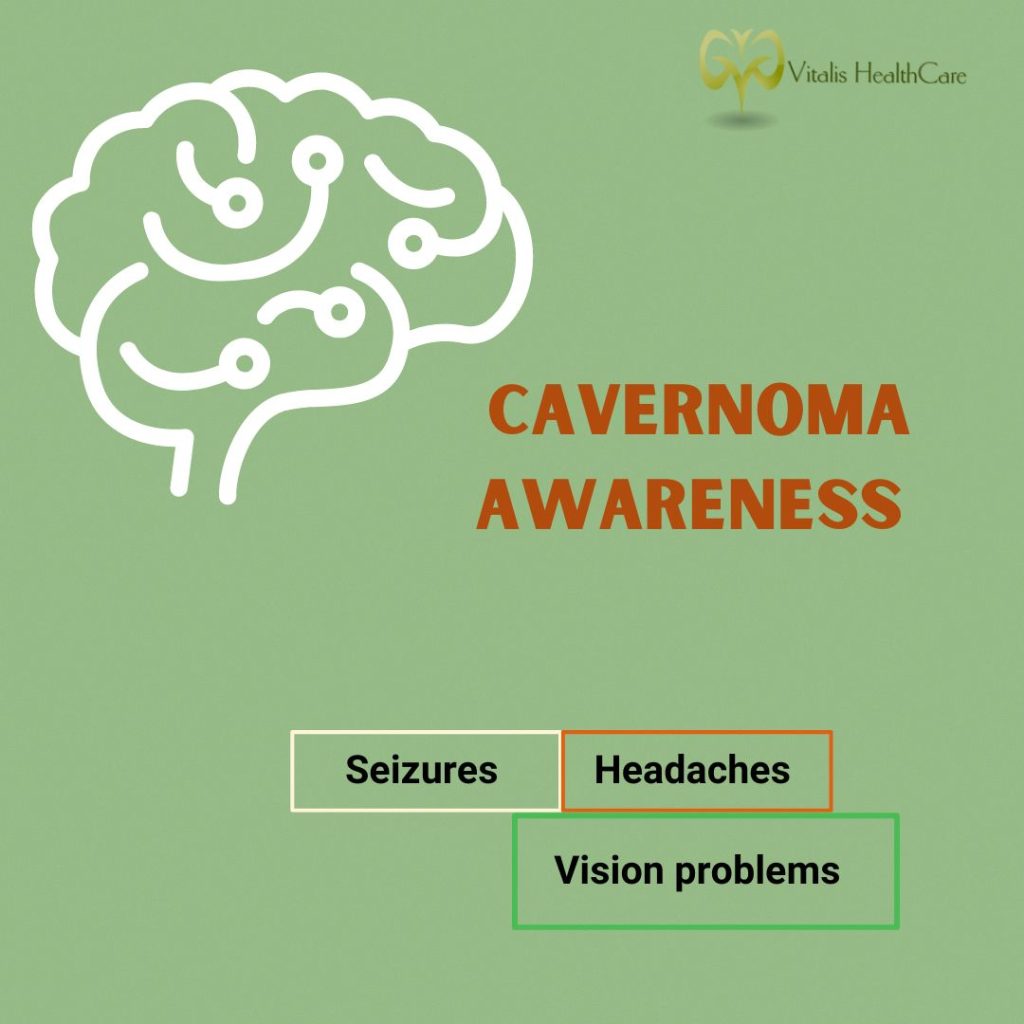A cavernoma, also known as a cavernous malformation, is a type of vascular abnormality in the brain or spinal cord. It consists of a cluster of abnormal blood vessels that form a dilated, spongy mass. Unlike typical blood vessels that have a smooth lining, cavernomas are composed of tangled blood vessels with leaky walls, leading to a honeycomb-like appearance on imaging studies. This can disrupt normal blood flow and lead to various complications.
What are the Symptoms of Cavernomas?
The symptoms of a cavernoma can vary widely depending on its location and size. Many people with cavernomas might not experience any symptoms and may only discover them incidentally through imaging studies. However, when symptoms do occur, they may include:
- Seizures: These are among the most common symptoms, especially if the cavernoma is located in the brain.
- Headaches: Persistent headaches may occur, often characterized with a throbbing or dull ache.
- Neurological Deficits: Depending on the cavernoma’s location, it might lead to problems such as weakness, numbness, or difficulty with coordination and balance.
- Vision Problems: If located near the optic pathways, it might cause visual disturbances.
- Speech and Cognitive Issues: In some cases, people might experience difficulties with speech or memory.
The exact cause of cavernomas is not always clear, but they can be classified into two main types:
- Congenital Cavernomas: These types of Cavernomas occur from birth due to genetic factors. They often run in families and are linked to genetic conditions such as familial cavernous malformation syndrome.
- Acquired Cavernomas: These Cavernomas on the other hand develop later in life due to other factors, such as trauma or certain medical conditions. They may appear sporadically without a known cause.
Treatment for cavernomas depends on various factors, such as their size, location, and whether they are causing symptoms. The primary treatment options include:
- Medications: Anti-seizure medications may be prescribed if the cavernoma is causing seizures. Pain relief and other symptom-specific medications can also be used to soothe the symptoms.
- Surgery: In cases where the cavernoma is causing significant symptoms or complications, surgical removal might be necessary. This is typically considered if the risks of surgery are outweighed by the potential benefits.
- Radiation Therapy: For some patients, especially those who are not surgical candidates, radiation therapy may be effective to target and shrink the cavernoma.
Living with a cavernoma can involve regular medical check-ups to monitor the condition. It’s important for patients to work closely with their healthcare team to manage symptoms and address any changes. Support groups and counseling can also help individuals and their families cope with the emotional and psychological aspects of the diagnosis.
CONTACT VITALIS HEALTHCARE
Through a compassionate approach, we at Vitalis Healthcare not only enhance patient comfort but also promote a more holistic and accessible healthcare experience.
Whether it’s managing chronic conditions, post-surgical care, or routine health monitoring, Vitalis is committed to improving the quality of life for patients while supporting them in their own familiar and supportive environment.
Please feel free to visit Vitalis Healthcare today, book a free consultation with us to get matched with the best service for your needs.
With us, you are in safe, competent and compassionate hands.
Phone Number: 240.716.6874
Email: info@vitalishealthcare.com
Location: We provide our services in every county in the State of Maryland, United States of America.
Office Address: 8757 Georgia Avenue Suite 440 Silver Spring, MD 20910.


